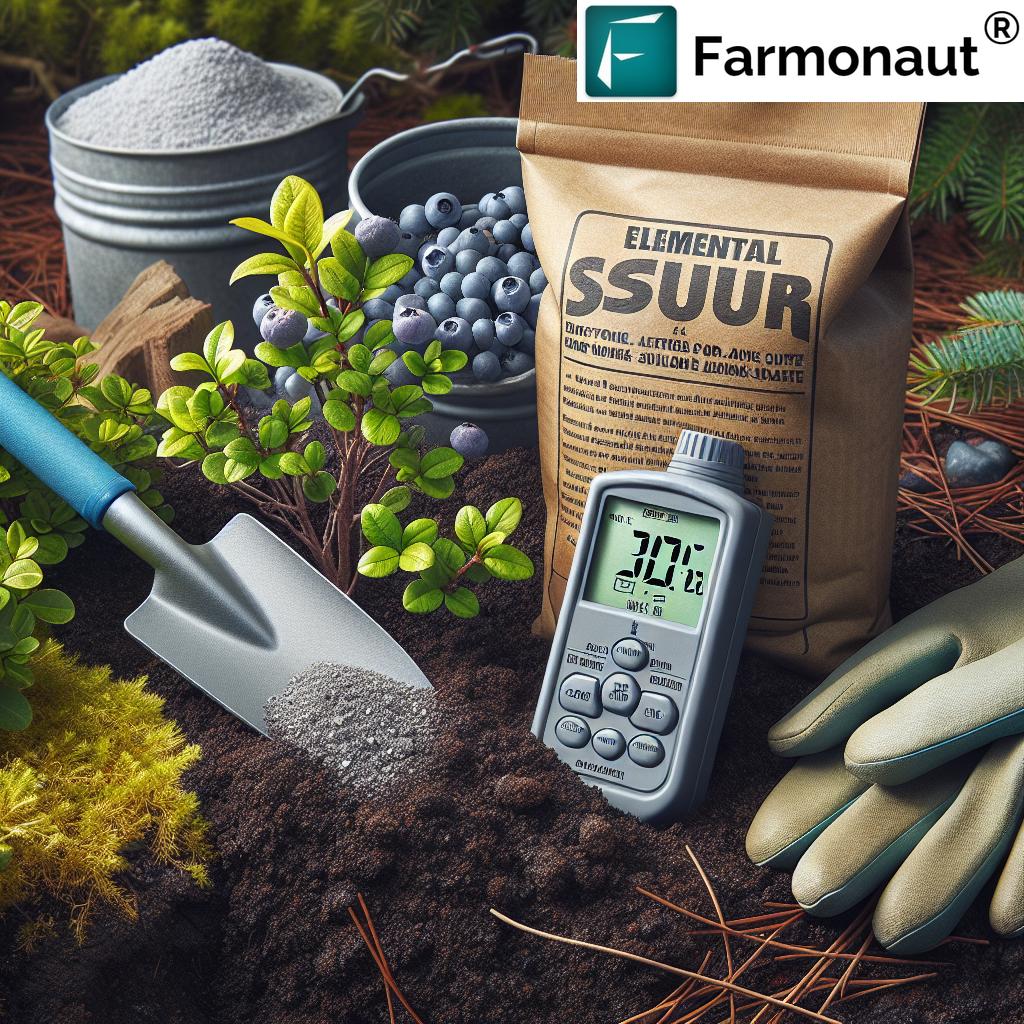Carpenter Bee Nest: 7 Killer Insecticides & Controls for Sustainable Agriculture and Forestry in 2025
“Carpenter bees can drill tunnels up to 10 inches long in wood, impacting forestry and timber production efficiency.”
Introduction: Why Carpenter Bee Nest Management Matters for Sustainable Agriculture and Forestry in 2025
Carpenter bees, recognized by their robust bodies and shiny, hairless abdomens, have long played a complex role in the ecosystems of agriculture and forestry. These solitary bees, which belong to the genus Xylocopa, are major pollinators akin to bumblebees, contributing significantly to the production of tomatoes, blueberries, passion fruit, and more. Yet, their unique nesting behavior—excavating tunnels inside wooden structures—often results in carpenter bee holes that compromise vital infrastructure and timber used across farms, apiaries, barns, greenhouses, even in outdoor furniture and trellises.
In 2025 and beyond, the challenge is clear: How can farmers, timber operators, and forestry professionals control damage from carpenter bee nests and their associates, carpenter ants—while still preserving essential pollinator populations? The answer lies in our adoption of evidence-based, sustainable, and integrated pest management (IPM) methods. This involves early detection, physical and ecological controls, judicious insecticide use, and leveraging technology for advanced monitoring—balancing the need for durable, high-quality wood and timber with environmental protection and agricultural productivity.
This comprehensive guide explores the biotechnology, ecological importance, risks, and 7 killer control methods—including sustainable insecticide options—crucial for effective carpenter bee nest management in 2025 and the foreseeable future.
Biology of the Carpenter Bee: Understanding Nesting Behavior and Bee Holes in Wood
To effectively handle carpenter bee problems, we need to fully understand their biology and habits. The carpenter bee, Xylocopa species, is unique among bees thanks to its solitary lifestyle. Unlike social honey bees or bumblebees, each female excavates her own carpenter bee nest, typically found in untreated, unpainted softwoods like pine, cedar, and redwood. Their preference for softwood makes these bees a persistent concern in agricultural and forestry operations in various climates.
Key Identification Features of Carpenter Bees
- Robust bodies with a shiny, hairless abdomen (unlike the fuzzy bumblebee).
- Usually black, sometimes with yellow or white markings near the head.
- Size varies; most adults are 12–25 mm in length.
Carpenter Bee Nesting Habit
The female carpenter bee uses her strong mandibles to bore perfectly round holes, generally between 6–12 mm in diameter. This nesting process involves creating series of tunnels inside wood—sometimes up to 10 inches long—composed of individual cells for egg-laying. Each cell is provisioned with a mix of pollen and nectar serving as food for the larvae.
- Carpenter bee holes are most commonly found in:
- Fencing, trellises, and decorative outdoor furniture
- Barns, apiary boxes, timber storage sheds, and greenhouses
- Unpainted eaves, roof timbers, and other exposed softwood structures
- Stored, untreated lumber in forestry and timber production facilities
Discover how satellite monitoring supports modern pest and resource management in agriculture and forestry operations.
Seasonal Activity and Reproduction
Carpenter bees emerge in spring, when females begin excavating tunnels. Eggs are laid one per cell, sealed off with regurgitated wood, and the larvae hatch and develop safely inside. By late summer or early autumn, new adults emerge and may reuse or expand existing carpenter bee nests—making it critical to address carpenter bee tunnel infestations before they become multigenerational.
“Over 7 eco-friendly insecticides are used in 2025 to protect wood and pollinators from carpenter bee and ant damage.”
Impact of Carpenter Bee Nests and Carpenter Ants on Agriculture and Forestry
Carpenter bees, while essential pollinators, pose a significant challenge due to their directly destructive nesting behavior. They cause structural damage in both active agricultural operations and forestry production environments. Damage is particularly acute in sites where untreated wood is prevalent or where timber is stored for processing and commercial sale.
Direct Damage: Carpenter Bee Holes and Galleries
- Weakened Structures: Tunneling activity can weaken wooden infrastructure—barns, apiary boxes, curing sheds, fencing, and timber stacks—jeopardizing building integrity over time.
- Reduced Lumber Quality: The presence of carpenter bee holes can degrade seasoned or stored wood, affecting its suitability for construction or sale and diminishing commercial value.
- Costly Repairs: Persistent infestations lead to recurring maintenance costs and can necessitate replacement of affected wood.
Indirect Damage and Synergy with Carpenter Ants
Carpenter bee holes often become entry points for moisture, creating conditions favorable for fungal decay and facilitating secondary infestations by carpenter ants. These ants are known to expand pre-existing galleries, further hollowing out structural wood and increasing the risk of collapse and long-term degradation.
- Increased Pest Risk: Open bee holes invite not only carpenter ants but also other wood-boring insects and moisture-loving fungi, leading to cascading structural issues.
- Challenges in Forestry: For timber operators, untreated infestations impact log grading, reduce yields, and complicate the export of lumber due to stricter international quarantine.
However, it’s important to note that, although these bees cause damage, their role as pollinators is critical to sustainable agriculture. Integrated management therefore focuses on minimizing negative impacts while fostering healthy pollinator populations.
Learn how environmental impact monitoring (like Farmonaut’s carbon footprinting tool) can help track resource use and support climate-smart, resilient agricultural practices, reducing unintentional impacts on pollinators and beneficial insects such as carpenter bees.
Integrated Pest Management: Sustainable Carpenter Bee & Ant Control in 2025
The latest best practices for control in 2025 stress an integrated pest management (IPM) approach—a holistic mix of prevention, early detection, physical and targeted chemical controls, biological solutions, and regular monitoring. This strategy not only controls carpenter bee infestations, but also protects pollinator health and timber quality.
- Prevention: Paint or seal exposed wood, use treated timber, and replace softwood with composites in critical areas to discourage nesting.
- Regular Monitoring: Utilize AI and satellite platforms (like Farmonaut) to identify hotspots or early damage, enabling timely interventions and reducing excessive chemical use.
- Physical Removal: Remove larvae or plug holes early when bee eggs can still be intercepted, limiting future generations.
- Targeted Use of Insecticides: Apply dusts or eco-friendly formulas directly in tunnels at dusk or at night to maximize efficacy and limit effects on beneficial insects.
- Biological Control & Predator Introduction: While emerging, new solutions based on natural predators of carpenter bees (like certain parasitic wasps and flies) show promise for the near future, offering pest-specific suppression without harming pollinator populations.
Traceability isn’t just for honey! Use blockchain-based product traceability tools to monitor, document, and verify your entire agricultural supply chain—including timber quality, pest management records, and more.
Focus Keyword: 7 Killer Insecticides & Control Methods for Sustainable Carpenter Bee & Ant Management (2025 & Beyond)
Effective control requires understanding which products and practices work best for carpenter bee nests and carpenter ant infestations, while still keeping pollinator protection and wood quality top-of-mind.
| Insecticide / Control Name | Active Ingredient (% or Type) |
Target Pest(s) | Estimated Effectiveness (% control rate) |
Duration of Protection (weeks) |
Environmental Impact Rating | Pollinator Safety | Forestry Suitability | Agriculture Suitability |
|---|---|---|---|---|---|---|---|---|
| Boric Acid Dust | Boric Acid (~99%) | Carpenter Ants, Bees* (tunneling) | 70–80% | 4–8 | Low | Use with Caution | Yes | Yes |
| Pyrethroid Dust | Permethrin/Cypermethrin (0.25–1%) | Carpenter Bees, Ants | 80–95% | 6–12 | Medium | Avoid during flowering | Yes | Yes |
| Silica Aerogel Dust | Amorphous Silica (~97%) | Ants, Bees* (larvae) | 60–80% | 8–12 | Low | Safe | Yes | Yes |
| Aerosol Contact Insecticide | Deltamethrin (<0.05%) | Ants (mobile), Bee adults | 60–75% | 1–2 | Medium | Avoid direct spray on pollinators | Limited | Yes |
| Natural Citrus Oil Spray | Limonene (5–10%) | Bees, Ants (repellent) | 50–65% | 2–3 | Low | Safe | Yes | Yes |
| Biological Control: Parasitic Wasps/Flies | Biocontrol Agent | Carpenter Bee Larvae | 50–70% | Variable | Low | Safe | Yes | Yes |
| Physical Removal (Plugging & Larvae Extraction) |
Non-chemical | Bees, Ants | 75–95% | 6–12 | None | Safe | Yes | Yes |
*Targeting bees should be considered only after pollination and under strict environmental protocols.
“Safe” means low risk to other pollinators when applied as recommended (timing, method).
See below for product details and practical usage recommendations.
Descriptions & Best-Use Strategies for Each Method
- Boric Acid Dust: Excellent for carpenter ant colonies occupying bee galleries. Apply carefully in tunnels to avoid pollinator exposure.
- Pyrethroid Dust: Most effective carpenter bee killer, with direct tunnel application in the evening. Choose microencapsulated formulas for longer protection.
- Silica Aerogel Dust: Disrupts insects’ outer protective layer; physically safe for pollinators but must be confined to tunnels to avoid non-target impact.
- Aerosol Contact Insecticide: Spot-treat active bee or ant presence. Best as a secondary, not primary, mode of control.
- Natural Citrus Oil Spray: Organic, repellent; best for deterring new nesting or ant establishment, not as a primary eradicator.
- Biological Control: Parasitic wasps/flies naturally target bee larvae but should be integrated only where compatible with overall pollinator management.
- Physical Removal & Tunnel Plugging: Plug holes with wood dowels or exterior-grade caulk post-removal. This blocks both bees and ants while preserving pollinator integrity.
Precision organic pest management, guided by real-time monitoring solutions, can keep both timber and beneficial insects safe. Large-scale farm management tools by Farmonaut help optimize integrated pest management across vast agricultural and forestry holdings.
Sustainable Prevention, Monitoring, and Eco-Friendly Practices
With an industry-wide push for sustainability in 2025 and beyond, minimizing damage from carpenter bee nests means emphasizing prevention and early monitoring. Here’s how to keep operations both productive and environmentally sound:
- Use Painted, Sealed, or Treated Wood: Paint, stain, or apply weatherproof varnish to all exposed softwoods. Females overwhelmingly avoid finished wood surfaces.
- Switch to Composites or Pressure-Treated Lumber: In new builds or replacements, select wood less likely to host bee tunnels. Modern treatments are now safer and more eco-friendly than before.
- Remove Infested Wood Promptly: Don’t allow unused or damaged timber to accumulate; replace or repurpose to limit future pest cycles.
- Physical Barriers: Wire mesh, steel flashing, or plastic sheeting can be fitted to exposed beams or structural edges in high-risk locations.
- Proactive Inspections: Mid-spring to late summer is the critical window for carpenter bee nest detection. Monitor for telltale ‘sawdust’ and circular holes using satellite and AI-based imaging (see Farmonaut solutions below).
Early detection helps keep crops and timber, such as blueberries and soft fruit, safe from damage—preserving quality and enhancing profits.
Secondary Infestations: Carpenter Ants in Carpenter Bee Galleries
Carpenter ants are notorious for exploiting pre-existing cavities created by bees. In the context of agriculture and forestry, monitoring for ant activity becomes essential whenever widespread carpenter bee nest holes are observed.
- Baiting and Targeted Insecticides: Use ant-specific baits (often with Boric acid or slow-acting toxins) inside wood cavities to eradicate colonies without broadcast spraying.
- Tunnel Expansion: Ants actively enlarge and interconnect bee galleries, leading to more significant wood loss. Prompt carpenter bee nest sealing and timber replacement prevent escalation.
Hardware, storage, and aging wood structures—especially apiary boxes, trellises, and curing barns—must be given extra attention after carpenter bee infestations to halt progression towards severe, unrepairable damage.
Best practices in aphid, carpenter bee, and ant API-based monitoring (for developers) can be built into custom farm management software using Farmonaut’s developer APIs for seamless integration of pest surveillance and climate intelligence.
How Satellite Monitoring & Data Solutions Transform Carpenter Bee & Ant Control in 2025+
Monitoring is the linchpin of effective, eco-friendly pest management. Rather than relying on reactive treatments (which can miss early signs or waste resources), satellite and AI-powered platforms have transformed how farmers and forestry managers detect, analyze, and respond to carpenter bee nest and carpenter ant threats.
Farmonaut: Enabling Proactive Pest and Resource Management
We at Farmonaut offer a satellite-driven, real-time platform for monitoring crop health, timber storage, and agricultural infrastructure. By providing detailed, multispectral imagery and actionable analytics, our service:
- Highlights early signs of abnormal wood or plant health (potentially tied to carpenter bee holes or ant galleries)
- Tracks environmental impacts, such as carbon footprinting, allowing for integrated sustainability tracking in agriculture and forestry
- Enables traceability and transparency across timber and agri-supply chains, improving regulation, safety, and consumer trust via blockchain-enabled traceability
- Supports fleet management of vehicles and equipment used for maintenance, pest control, and resource optimization in large-scale operations
This proactive, tech-enabled oversight ensures that infestations remain manageable and do not escalate to the point of costly remediation or irreversible infrastructure loss. It also helps minimize unnecessary insecticide use, benefiting both pollinator and environmental safety.
Deploy satellite technology to monitor pest and crop health at scale—essential for preventing carpenter bee nest and ant damage anywhere wood is used.
Farmonaut Subscription Plans
Affordable satellite-based monitoring and management, scalable for any size agriculture, forestry, or timber operation.
Essential Videos for Sustainable Agriculture & Forestry Operations
Connect your farm or forestry operation to satellite-driven intelligence in minutes, enhancing efficient pest and timber management.
Frequently Asked Questions: Carpenter Bee Nests, Control, and Timber Protection
How do I identify carpenter bee holes compared to other wood-boring insects?
Carpenter bee holes are perfectly round, typically 6–12 mm in diameter, and often with sawdust directly below. Other insects create irregular or much smaller entryways.
When is the most effective time to apply a carpenter bee insecticide?
The best timing is late afternoon or early evening in mid-spring, when female bees are inside their carpenter bee nests. This maximizes the chance of direct contact and minimizes impacts to non-target pollinators.
Is it safe to use insecticides on wood near pollinator crops like blueberries or passion fruit?
Only apply insecticides in a targeted fashion, inside bee tunnels. Avoid spraying blooming plants and always respect pre-harvest intervals. For maximal safety, opt for non-chemical or bio-based control when near pollinator-reliant crops.
What are the best eco-friendly alternatives to chemical carpenter bee killers?
Painting or sealing wood (prevention), physical removal, natural citrus oil sprays, and introduction of biological controls (parasitic wasps/flies) can all reduce impact. Using technology platforms for early detection, like Farmonaut’s satellite monitoring, further decreases the need for repeated chemical intervention.
How does Farmonaut help manage carpenter bee and ant infestations?
We provide real-time, satellite-based crop, timber, and infrastructure monitoring. Our analytics help users detect early pest or damage hotspots, optimize response, and document treatments for transparency—reducing loss and improving sustainable operations in both agriculture and forestry.
Can filling old carpenter bee holes prevent secondary infestations?
Yes. Plugging old tunnels with wood dowels or exterior-grade sealants rapidly reduces risk of both re-nesting by bees and colonization by carpenter ants, preserving overall wood quality.
Conclusion: Balancing Carpenter Bee Management, Timber Quality & Pollinator Health for 2026 and Beyond
The carpenter bee nest remains both an opportunity and challenge in sustainable agriculture and forestry. In 2025 and looking ahead, the most effective management practices integrate paint or sealant-based prevention for new wood, timely detection through advanced monitoring, targeted insecticides, and judicious removal of infested timber. Carpenter ants, as secondary invaders, reinforce the need for rapid response and structural assessment after bee nesting is found.
With the proper integrated approach—including leveraging real-time, satellite-based platforms like Farmonaut—we can protect vital wooden infrastructure and valuable timber, while sustaining the essential pollination services provided by these remarkable bees. Combining technology, best agronomic practice, and eco-friendly pest management ensures a legacy of strong, productive, environmentally responsible operations in agriculture and forestry for 2026 and beyond.
Stay at the forefront of sustainable pest management:
- Use satellite-driven monitoring for your farms and timber lots (get started here).
- Leverage blockchain traceability for transparent supply chains (learn more).
- Track your environmental impact and compliance with carbon footprinting analytics (see how).
Carpenter bee and ant management is not just about protecting wood—it’s about sustaining ecosystems while ensuring economic and biological success for years to come.












